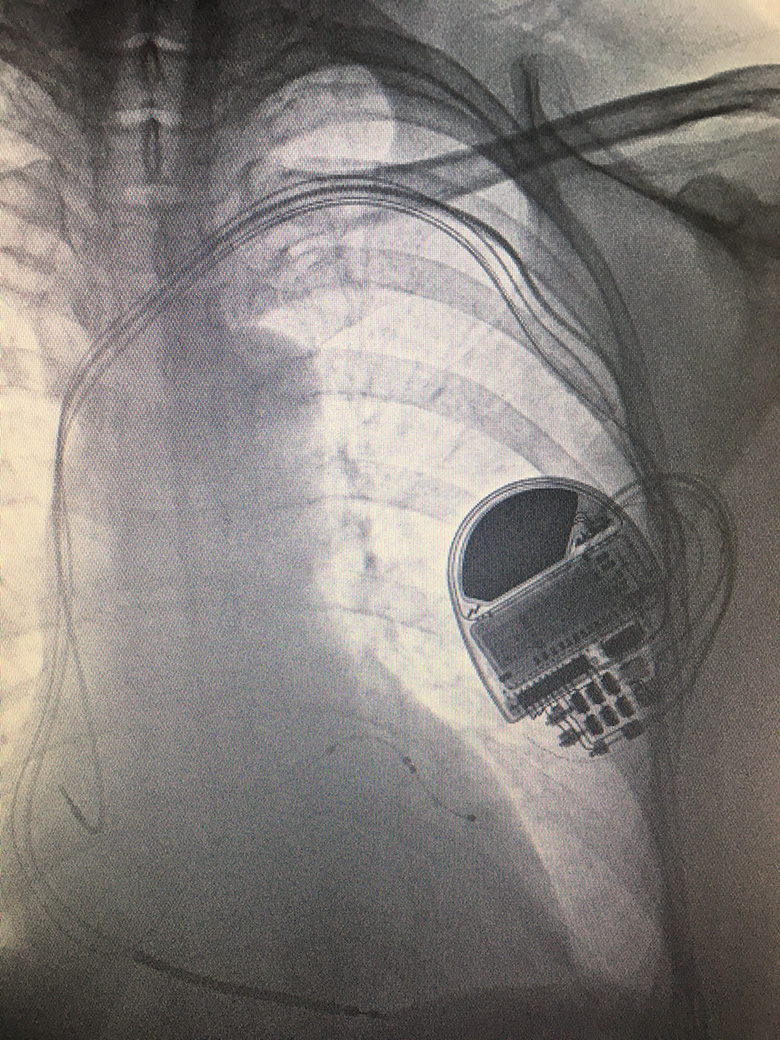Implantable Cardioverter-Defibrillator (ICD) and cardiac resynchronisation therapy (CRT)
Patients with a known history of cardiac arrest and ventricular tachyarrhythmia, or if considered at high risk of such events, may be offered an Implantable Cardioverter-Defibrillator (ICD). An ICD device is larger than a conventional pacemaker and can be connected to an electrical defibrillator-pacing lead and, if required, a standard atrial pacemaker lead.
Selected patients with symptomatic heart failure may benefit from an additional left ventricular pacemaker lead positioned within the coronary sinus vein. This is known as cardiac resynchronisation therapy (CRT), which can improve heart function, symptoms and prognosis. CRT can be combined with an ICD, known as CRTD, or simply as a pacemaker, or CRTP.

Biventricular ICD (CRTD)
The procedure is performed by a cardiologist, under local anaesthetic and light sedation, in sterile surgical conditions. A 4-5cm incision is made on the chest wall approximately 1cm below the collar bone. The subclavian, axillary or cephalic veins located here are accessed, in the same way as a pacemaker procedure, to position electrical leads within the right ventricle, right atrium and coronary sinus vein, as required, under X-ray guidance before connecting to a ICD/CRT device.
After the device is fitted, patients usually stay overnight in hospital and undergo a chest X-ray, device check and wound review before being discharged home. Heart rhythm devices require regular long term follow up after discharge. ICD/CRT device battery life can last up to 6 years, depending on individual use and circumstances, before requiring a battery change procedure.
ICD/CRT device insertion procedures are invasive and involve permanent implants. There are small degrees of risks involved, including infection, bleeding, lead displacement, pneumothorax (puncture of the lung), tamponade (puncture of the heart), lead failure and inappropriate shocks, which would be discussed further with your specialist.


